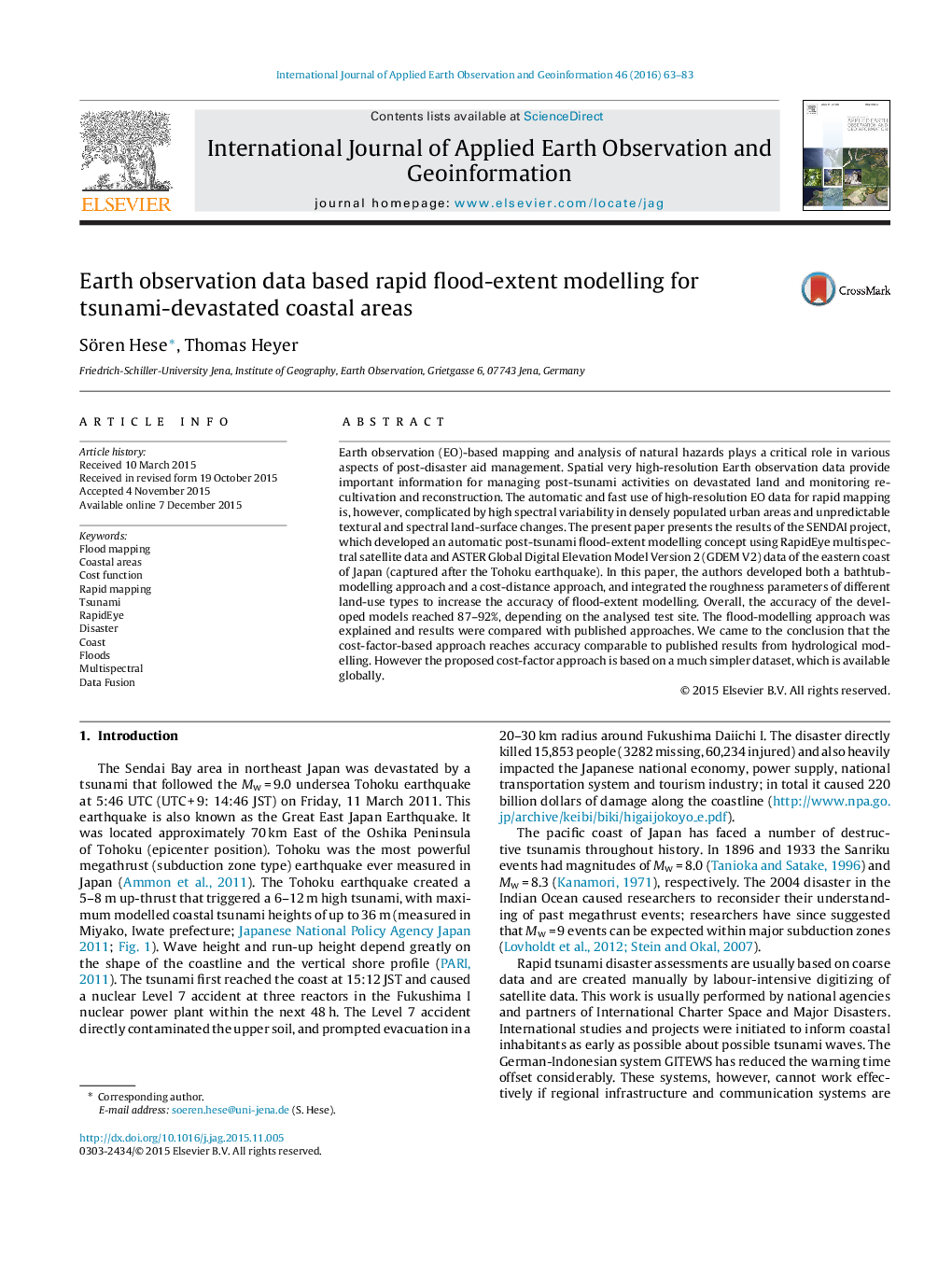| Article ID | Journal | Published Year | Pages | File Type |
|---|---|---|---|---|
| 4464669 | International Journal of Applied Earth Observation and Geoinformation | 2016 | 21 Pages |
•VHR (Very High Resolution) Earth observation data is used to optimize a flood extent modelling approach of a tsunami devastated coastal region.•Flood extent modelling accuracy is improved compared to published results when using Earth observation based land surface roughness parameters.•Accuracy of the digital terrain model was found to be crucial for the overall flood modelling results.•Object based bathtub and cost-distance modelling based on image object yielded best results in this study.
Earth observation (EO)-based mapping and analysis of natural hazards plays a critical role in various aspects of post-disaster aid management. Spatial very high-resolution Earth observation data provide important information for managing post-tsunami activities on devastated land and monitoring re-cultivation and reconstruction. The automatic and fast use of high-resolution EO data for rapid mapping is, however, complicated by high spectral variability in densely populated urban areas and unpredictable textural and spectral land-surface changes. The present paper presents the results of the SENDAI project, which developed an automatic post-tsunami flood-extent modelling concept using RapidEye multispectral satellite data and ASTER Global Digital Elevation Model Version 2 (GDEM V2) data of the eastern coast of Japan (captured after the Tohoku earthquake). In this paper, the authors developed both a bathtub-modelling approach and a cost-distance approach, and integrated the roughness parameters of different land-use types to increase the accuracy of flood-extent modelling. Overall, the accuracy of the developed models reached 87–92%, depending on the analysed test site. The flood-modelling approach was explained and results were compared with published approaches. We came to the conclusion that the cost-factor-based approach reaches accuracy comparable to published results from hydrological modelling. However the proposed cost-factor approach is based on a much simpler dataset, which is available globally.
